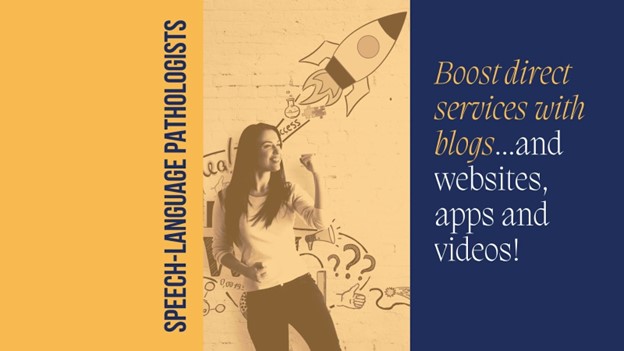Let's Take Some Time to Make Time
School-based SLPs spend over 20 hours per week on direct services (ASHA, 2020), and that number can vary depending on the nature and severity of students on caseloads. However, even with a smaller caseload, it can be difficult to find enough time in the day to provide all of the services our students need. That is where technology comes in!
Blogs for Therapy Ideas
Finding that perfect blog is a great way to discover therapy ideas, materials, and tools, understand what other therapists are going through, and even vent if needed. Bloggers are always updating with new content, so it is worth checking back frequently. For technology-inspired blogs check out SpeechTechie, The Digital SLP and GeekSLP. Students can blog as part of direct intervention as well. One excellent and easy way to collaborate with students to plan direct services is to use Google Slides. SLPs and their students can use Google Slides to share, comment, debate, talk about, and present on just about any topic. For some helpful information on using Slides as an activity, read the Ditch That Textbook blog.
Apps, Websites, and Videos Work for Direct Services
There are many great apps out there that SLPs can use for direct services, many of which are free! These apps cover various topics from articulation to vocabulary and language to social communication. Some favorites are Sounds of Speech, Speech Tutor and Conversation Therapy.
Websites are also a great way to provide direct intervention with minimal preparation. Websites like Story Place, Starfall, Once Upon a Picture, and SLPStoryTellers are easy to use and perfect when working on various pre-literacy, literacy, and inferencing skills.
Another fantastic approach to engaging students is with videos. Clinicians can utilize videos for various goals, they are quick and easy to access and often take zero prep. Some activities offered through EnglishCentral and EdPuzzle have activities built right into the video, so it is just a plug-and-play activity. YouTube also has playlists of videos that are perfect for therapy. For example, check out this great playlist from Seldom Speechless.
Technology Can Give Us Time!
In general, technology can help us save time if SLPs know how to access resources quickly and are familiar with their content. When starting out with any new technology, it is essential to explore the site, video or application, test the usability, and have fun!
References:
ASHA. (2020). Speech-language pathologists in schools: Roles and responsibilities.
